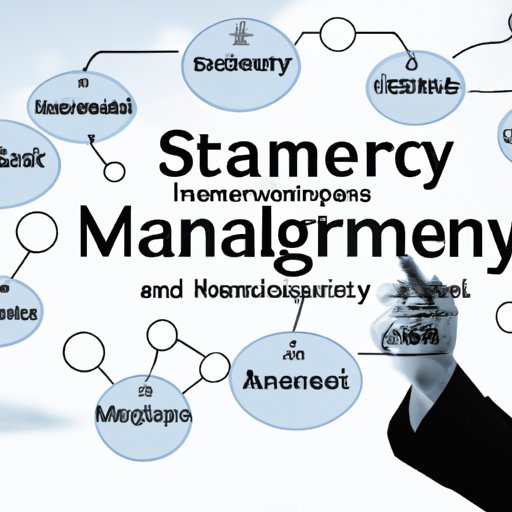
An Overview of the Components of Supply Chain Management
Supply chain management (SCM) is the process of managing the flow of materials and products through a business. The goal of SCM is to ensure that the right product is delivered to the right customer on time and at the right price. To achieve this, businesses need to have a clear understanding of the different components of their supply chain.
Definition of Supply Chain Management
Supply chain management is a term used to describe the coordination of activities across the entire supply chain, from suppliers to customers. It includes the planning, sourcing, manufacturing, transportation, storage, and delivery of products and services. It also involves managing the relationships between suppliers and customers, as well as managing the flow of materials, products, and services.
Different Parts of a Supply Chain
A supply chain consists of several different elements. These include: inventory management, transportation and logistics, warehousing, procurement, planning, sourcing, manufacturing, distribution, information technology, quality assurance, and risk management. Each of these elements plays a vital role in ensuring that the supply chain runs smoothly and efficiently.

Exploring the Main Elements of Supply Chain Management
Inventory management is the process of tracking and managing the inventory of products and materials. This includes keeping track of stock levels, ordering new supplies, and ensuring that the right items are available when needed. Transportation and logistics involve planning, scheduling, and coordinating the movement of goods and services from one point to another. Warehousing involves managing the storage of goods and materials, including receiving, storing, and distributing them.
Procurement involves the acquisition of goods and services from external suppliers. This includes researching potential suppliers, negotiating prices, and making sure that the quality of the goods and services meets the company’s standards. Planning is the process of creating a plan for the entire supply chain, from production to delivery. Sourcing involves finding and selecting suppliers and vendors who can provide the necessary goods or services.
Manufacturing involves transforming raw materials into finished products. Distribution involves transporting the finished products to customers. Information technology is used to manage the data related to the supply chain, such as order processing and tracking. Quality assurance ensures that the products and services meet the required standards. Risk management involves identifying and managing any potential risks associated with the supply chain.

The Different Stages in Supply Chain Management
The supply chain has several different stages, each of which requires careful management. The first stage is planning, which involves creating a plan for the entire supply chain. The second stage is sourcing, which involves finding and selecting suppliers and vendors who can provide the necessary goods or services. The third stage is manufacturing, which involves transforming raw materials into finished products. The fourth stage is distribution, which involves transporting the finished products to customers.
A Closer Look at the Essential Parts of Supply Chain Management
Information technology is an essential part of supply chain management. It enables businesses to collect, store, and analyze data related to the supply chain, such as order processing and tracking. Quality assurance is also important, as it ensures that the products and services meet the required standards. Risk management is also a key component, as it involves identifying and managing potential risks associated with the supply chain.

The Benefits of Having a Comprehensive Supply Chain Management System
Having a comprehensive supply chain management system in place provides numerous benefits to businesses. It can help improve efficiency, increase customer satisfaction, and reduce costs. A well-managed supply chain can also help businesses stay competitive in the market and maximize profits.
What You Need to Know About Supply Chain Management Components
Developing a strategy is essential for any successful supply chain management system. This includes setting objectives, defining roles and responsibilities, and outlining processes and procedures. Additionally, leveraging technology is key to ensuring that the supply chain runs smoothly and efficiently. Finally, it’s important to measure performance in order to identify areas of improvement and ensure that the supply chain is meeting the business’s goals.
(Note: Is this article not meeting your expectations? Do you have knowledge or insights to share? Unlock new opportunities and expand your reach by joining our authors team. Click Registration to join us and share your expertise with our readers.)
